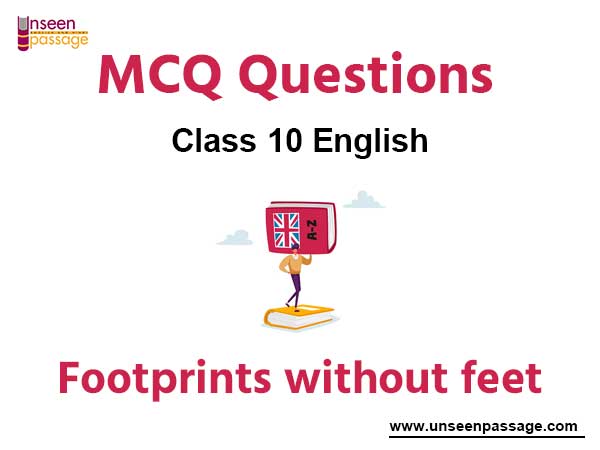Manufacturing Industries MCQ Class 10 Social Science
Please refer to Chapter 6 Manufacturing Industries MCQ Class 10 Social Science with answers below. These multiple-choice questions have been prepared based on the latest NCERT book for Class 10 Social Science. Students should refer to MCQ Questions for Class 10 Social Science with Answers to score more marks in Grade 10 Social Science exams. Students should read the chapter Manufacturing Industries and then attempt the following objective questions.
MCQ Questions Class 10 Social Science Chapter 6 Manufacturing Industries
The Manufacturing Industries MCQ Class 10 Social Science provided below covers all important topics given in this chapter. These MCQs will help you to properly prepare for exams.
Question. The only industry in the country which is self reliant and complete in the value chain is:
(a) Agro based industry
(b) Heavy industry
(c) Textile industry
(d) None of the above
Answer
C
Question. The power-looms came into use after the:
(а) Sixteenth century
(b) Seventeenth century
(c) Eighteenth century
(d) Nineteenth century
Answer
C
Question. Industries that use minerals and metals as raw materials are called:
(a) Agro based industries
(b) Metal based industries
(c) Mineral based industries
(d) None of the above
Answer
C
Question. Which of the following is basic industry:
(а) Sugar
(b) Cotton
(c) Jute
(d) Iron and steel
Answer
D
Question. Inspite of large quantity of production of steel, per capita consumption per annum is only:
(a) 20 kg
(b) 32 kg
(c) 40 kg
(d) 52 kg
Answer
B
Question. In the 1950s China and India produced almost the same quantity of:
(a) Iron
(b) Manganese
(c) Copper
(d) Steel
Answer
D
Question. Agriculture and industry are:
(a) Exclusive to each other
(b) Not-exclusive to each other
(c) Not inter-related to each other
(d) None of the above
Answer
B
Question. The trend of growth rate in manufacturing over the last decade has been around:
(а) 7 percent per annum
(b) 8 percent per annum
(c) 9 percent per annum
(d) 10 percent per annum
Answer
A
Question. The number of aluminium smelting plants in India are:
(a) 8
(b) 10
(c) 12
(d) 14
Answer
A
Question. In 2004, India produced over 600 million tonnes of:
(a) Steel
(b) Aluminium
(c) Copper
(d) All the above
Answer
B
Question. India occupies the first place in the production of:
(a) Sugar
(b) Jute
(c) Gur and khandsari
(d) All the above
Answer
C
Question. The number of sugar mills in the country are:
(a) 400
(b) 420
(c) 440
(d) 460
Answer
D
Question. The chemical industry in India contributes approximately:
(а) 3 percent of the GDP
(b) 4 percent of the GDP
(c) 5 percent of the GDP
(d) 6 percent of the GDP
Answer
A
Question. The first cement plant was set up in Chennai in:
(a) 1804
(b) 1904
(c) 1814
(d) 1914
Answer
B
Question. Production of goods in large quantities after processing from raw materials to valuable products is called:
(а) Finishing
(b) Completing
(c) Manufacturing
(d) None of the above
Answer
C
Question. People employed in the secondary activities manufacture the primary materials into.
(а) Raw materials
(b) Complete goods
(c) Usable goods
(d) Finished goods
Answer
D
Write true (T) or false (F)
Question. The cement industry requires bulky and heavy raw materials like limestone, silica, alumina and gypsum.
Answer
True
Question. There are 138 large cement plants and 332 mini cement plants in the country.
Answer
False
Question. Today, there are nearly 1800 cotton and human made fibre textile mills in the country.
Answer
False
Question. Many industries tend to come together to make use of the advantages offered by the urban centres known as agglomeration economies.
Answer
True
Question. The textile industry does not occupy a unique position in the Indian economy.
Answer
False
Question. Bauxite, the raw material used in the smelters is a very bulky, dark greyish coloured rock.
Answer
False
Question. The chemical industry in India is the third largest in Asia and occupies the twelfth place in the world in term of its size.
Answer
True
Question. Automobiles provide vehicles for quick transport of good services and passengers.
Answer
True
Question. Software technology parks provide single window service and high data communication facility to software experts.
Answer
True
Question. Inorganic chemicals include petro chemicals, which are used for manufacturing of synthetic fibres, plastics, dye stuffs, etc.
Answer
False
Question. There are 57 fertilizer units manufacturing nitrogenous and complex nitrogenous fertilizers.
Answer
True
Question. Since 2003, manufacturing is again growing at the rate of 9 to 10 percent per annum.
Answer
True
Question. Industrial locations are not complex in nature.
Answer
False
Question. The raw material used in the sugar industry is bulky and in haulage its sucrose content reduces.
Answer
True
Question. Iron is needed to manufacture a variety of engineering goods, medical, telephonic etc.
Answer
False
Fill in the blanks
Question. At present there are 15 manufactures of passenger cars and multiutility, ……………………… of commercial vehicles, 14 of the two and three-wheelers.
Answer
9
Question. A major impact of IT industry has been on ……………………… generation.
Answer
employment
Question. ……………………… is done by handloom, powerloom and in mills.
Answer
Weaving
Question. Since the mid-eighties, the ……………………… sector has received a lot of attention.
Answer
spining
Question. Production and consumption of ……………………… is often regarded as the index of a country’s development.
Answer
steel
Question. India is the largest producer of ……………………… iron.
Answer
sponge
Question. The first successful textile mill was established in ……………………… in 1854.
Answer
Mumbai
Question. Primary treatment of pollutants by mechanical means involves screening, grinding, ……………………… and sedimentation.
Answer
flocculation

We hope you liked the above Manufacturing Industries MCQ Class 10 Social Science. In case you have any questions please put them in the comments box below and our teachers will provide you a response.


